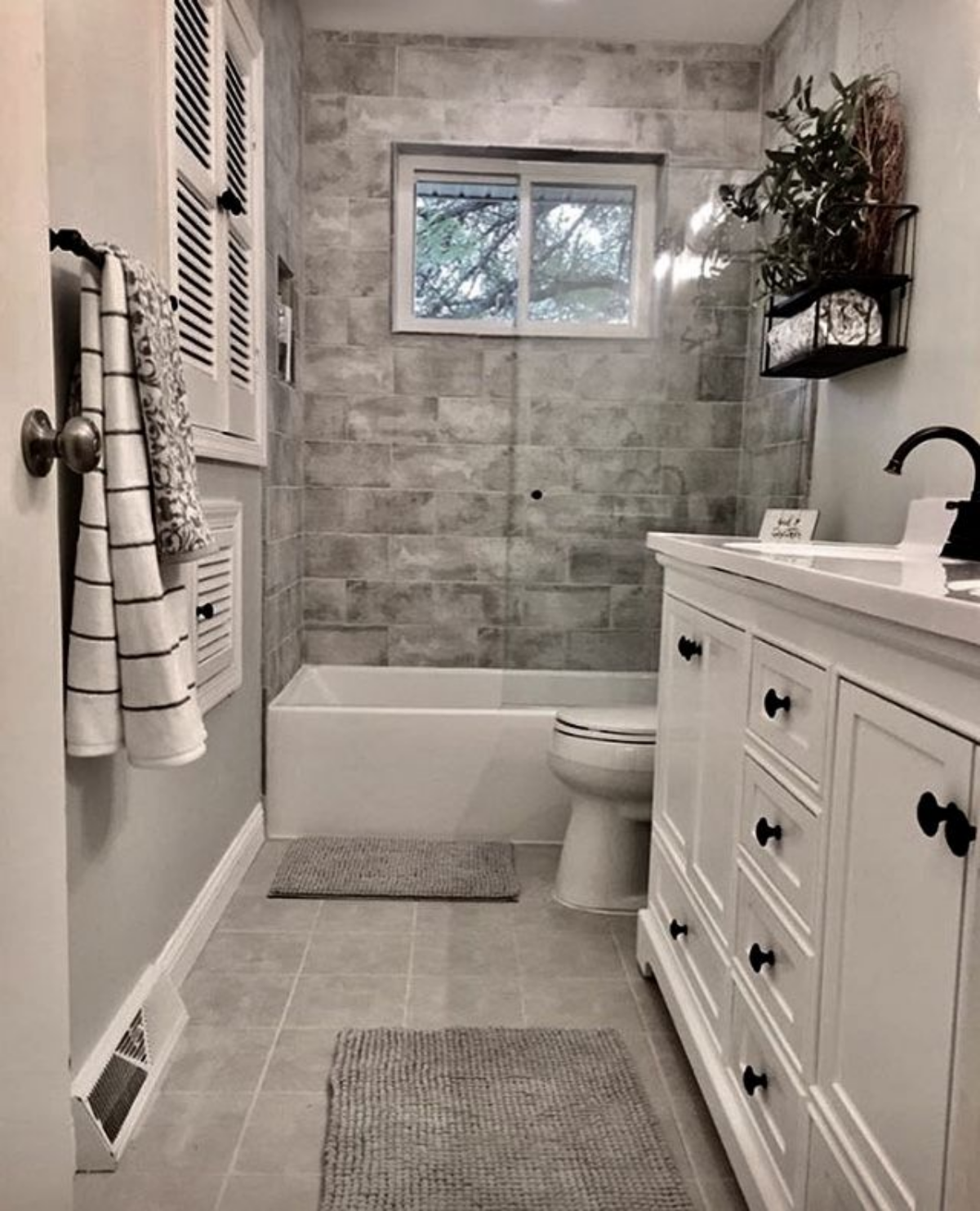Understanding The Importance of Adequate Ventilation in Plumbing Systems
Understanding The Importance of Adequate Ventilation in Plumbing Systems
Blog Article
Each person may have their own individual theory on the subject of What Are Plumbing Vents and Why Are They Important?.

Correct air flow in plumbing systems is commonly forgotten, yet it is important for maintaining the functionality and safety of your home's pipes. Ventilation aids manage air pressure, avoid the accumulation of hazardous gases, and ensure the effective elimination of waste. In this guide, we will discover the value of correct plumbing ventilation, how it works, and the benefits it gives your plumbing system.
How Air Flow Works in Pipes Systems
Atmospheric Pressure Guideline
Appropriate ventilation preserves well balanced air pressure within the plumbing system. When water moves with pipes, it displaces air. Without adequate air flow, this displacement can create unfavorable pressure, resulting in slow drains or siphoning of water from catches, which can trigger undesirable odors to seep right into the home.
Stopping Sewage System Gas Buildup
Among one of the most important features of pipes vents is to prevent sewer gases, such as methane and hydrogen sulfide, from collecting within the home. These gases can pose serious health risks and are highly combustible. Vent pipelines allow these gases to run away securely outdoors.
Aiding in Waste Removal
Ventilation helps in the reliable elimination of wastewater by avoiding airlocks in the drainage system. When air can move easily via the vents, it enables water and waste to flow smoothly via the pipes, decreasing the risk of blockages and backups.
Advantages of Proper Air Flow
Enhanced System Effectiveness
Appropriately ventilated plumbing systems operate more effectively, with fewer blockages, faster draining pipes, and less pressure on the pipes. This effectiveness extends the lifespan of the pipes system.
Improved Air Top Quality
By avoiding sewer gases from entering your home, correct ventilation contributes to much better interior air top quality, making your living atmosphere healthier and much more comfortable.
Protecting Against Water Damages
Ample air flow aids avoid water from being siphoned out of traps, which can lead to drain gases entering the home and triggering water damage gradually.
Steps to Make Certain Correct Air Flow
Consulting Plumbing Codes
Constantly seek advice from regional pipes codes when designing or changing your plumbing system. These codes supply the required standards for proper airing vent and guarantee your system satisfies security requirements.
Normal Inspection and Upkeep
Normal evaluations can aid identify possible air flow problems before they become significant troubles. Upkeep tasks, such as cleaning up air vent pipes and looking for clogs, are crucial for maintaining the system in good working order.
Specialist Installment
For new installments or major adjustments, it's a good idea to hire an expert plumber. They have the competence to guarantee the air flow system is appropriately made and mounted according to code.
Comprehending Air Flow in Pipes
Ventilation in pipes refers to the network of pipes that permit air to flow with the water drainage system. These vents serve numerous functions, including managing atmospheric pressure within the pipes, avoiding drain gases from entering the home, and helping in the smooth flow of wastewater.
Sorts Of Plumbing Vents
Main Heap Vent
The primary pile vent, likewise referred to as the air vent pile, is the primary vent in a plumbing system. It extends from the main drain align through the roofing system, allowing gases to leave and fresh air to enter the system.
Branch Vent
Branch vents link to the main stack vent and serve specific fixtures, such as sinks, commodes, and showers. These vents make certain that each component has appropriate ventilation to function appropriately.
Air Admittance Shutoff (AAV).
An Air Admittance Shutoff (AAV) is a one-way valve that enables air to go into the plumbing system without the need for a conventional vent pipe prolonging through the roofing system. AAVs are typically utilized in restorations or locations where installing a typical vent is impractical.
Signs of Poor Ventilation in Pipes.
Slow Draining Fixtures.
If your sinks, bathtubs, or commodes are draining pipes gradually, it could be an indication of inadequate air flow. Poor air circulation can create a vacuum cleaner impact, making it challenging for water to drain pipes appropriately.
Gurgling Appears.
Gurgling noises coming from drains pipes are frequently an outcome of air being sucked through water traps as a result of negative stress in the pipelines. This is a clear indicator of not enough ventilation.
Unpleasant Odors.
Drain odors inside your home are a warning that your plumbing system is not effectively ventilated. This can indicate that sewage system gases are not being sufficiently vented outside, leading to potentially harmful conditions.
Common Air Flow Blunders.
Insufficient Vent Sizing.
Using small vent pipelines can bring about poor air circulation and stress discrepancies in the system. It's vital to make use of vents that fulfill the specific requirements of your plumbing system.
Improper Vent Positioning.
Placing vents also much from the components they serve can reduce their effectiveness. Appropriate placement makes sure that air can move openly and successfully via the system.
Disregarding Code Demands.
Building ordinance provide specific standards for plumbing ventilation. Overlooking these codes can lead to a system that stops working to work appropriately and may cause pricey repairs or health hazards.
Final thought.
Appropriate air flow is a critical component of any kind of pipes system, making certain that it operates successfully and safely. By comprehending the importance of air flow, recognizing the indications of poor ventilation, and taking steps to maintain your system, you can avoid costly issues and shield your home's air high quality.
4 Things You Should Know About Your Plumbing Vents
What Plumbing Vents Are
Also called a vent stack, a plumbing vent is a vertical pipe attached to your drain line that runs through your roof. The plumbing vent pipe, or plumbing air vent, removes gas and odors from your plumbing system and allows fresh air to enter the pipes, helping the water to flow out of the drain pipes.
What Plumbing Vents Do
Plumbing vents have two basic functions. One of which is to allow unpleasant smelling wastewater and sewer gasses to escape your plumbing system instead of entering your home. Plumbing vent pipes are typically located on roofs, away from windows, to ensure the fumes exit the home completely.
The other function of the plumbing vent is to move fresh air into your plumbing system. This helps move water through every plumbing fixture in your house, like toilets and sink drains. Think of the way in which you need to let a little air into the bottle as you pour soda in order to make the drink flow smoothly.
Different Types of Plumbing Vents
True vent: This is the most common vent option. In simplest terms, a true vent is a vertical pipe attached to your drain line that exits through the roof. They often function as the main vent that other fixtures can connect to. Re-vent pipe or auxiliary vent: Attached to the drain line near specific plumbing fixtures, re-vent pipes run up and over to connect to the main vent. Common vent: Two plumbing fixtures installed on opposite sides of a wall are typically tied into the vent stack using something known as a sanitary cross. Wet vent: This venting option operates as a drain pipe and a vent at the same time. Wet vent drainage systems drain water from one fixture while venting the air from another. Although they’ve been used for over 100 years, wet vent systems have only recently been added to the plumbing code in many areas. If you’re planning on installing one in a bathroom remodel, make sure you check your local code prior to construction. Loop vent: For free-standing fixtures like kitchen island sinks, loop vents are ideal. These vent pipes run under the floor, rise from the P-trap, and create a loop inside the cabinet sink. Air admittance valve: An AAV is a one-way mechanical valve typically installed at the site of the plumbing fixture. AAVs allow venting to occur without having to tie into a larger venting system. They’re ideal for venting fixtures where you aren’t able to easily connect to an existing vent system. Common Plumbing Vent Issues
Although vent pipes typically don’t have water flowing through them, they’re still subject to many typical plumbing issues. For example, clogs are one of the most common problems associated with sewer vent pipes. If your vent pipe gets clogged, all of your plumbing fixtures tied into the vent stack will be affected.
A sink with a slow drain that bubbles and gurgles or a strong sewage smell around your toilet are both indicators that your toilet vent pipe is clogged. Because most vent pipes exit through the roof, old leaves, twigs or even a bird’s nest could be clogging the pipe.
Clogs in your vent pipe system cause a buildup of negative pressure, meaning that water won’t be able to flow out of your home very well. It’s similar to putting your finger over the opening of a straw to trap water inside. When you remove your finger, the water is able to flow out of the straw.
If you suspect you have any blockage in your vent, make sure you have a professional come examine the situation. Left unchecked, a blocked air vent can lead to other costly repairs, like leaks and sediment buildup.
Under Pressure
Pipe vents are essential aspects of a home’s plumbing system. Owning a home means learning about all sorts of things you never put much thought into before. But by understanding as much as you can about the important systems of your home, you can keep those budgets intact and those anxiety levels low.
https://www.homeserve.com/en-us/blog/home-improvement/plumbing-vents/

As an enthusiastic reader about , I thought sharing that piece of content was a great idea. Sharing is nice. You won't know, you may very well be helping someone out. I recognize the value of reading our article about Essential Plumbing Vent Pipes: Understanding Their Role.
Free Estimate Report this page